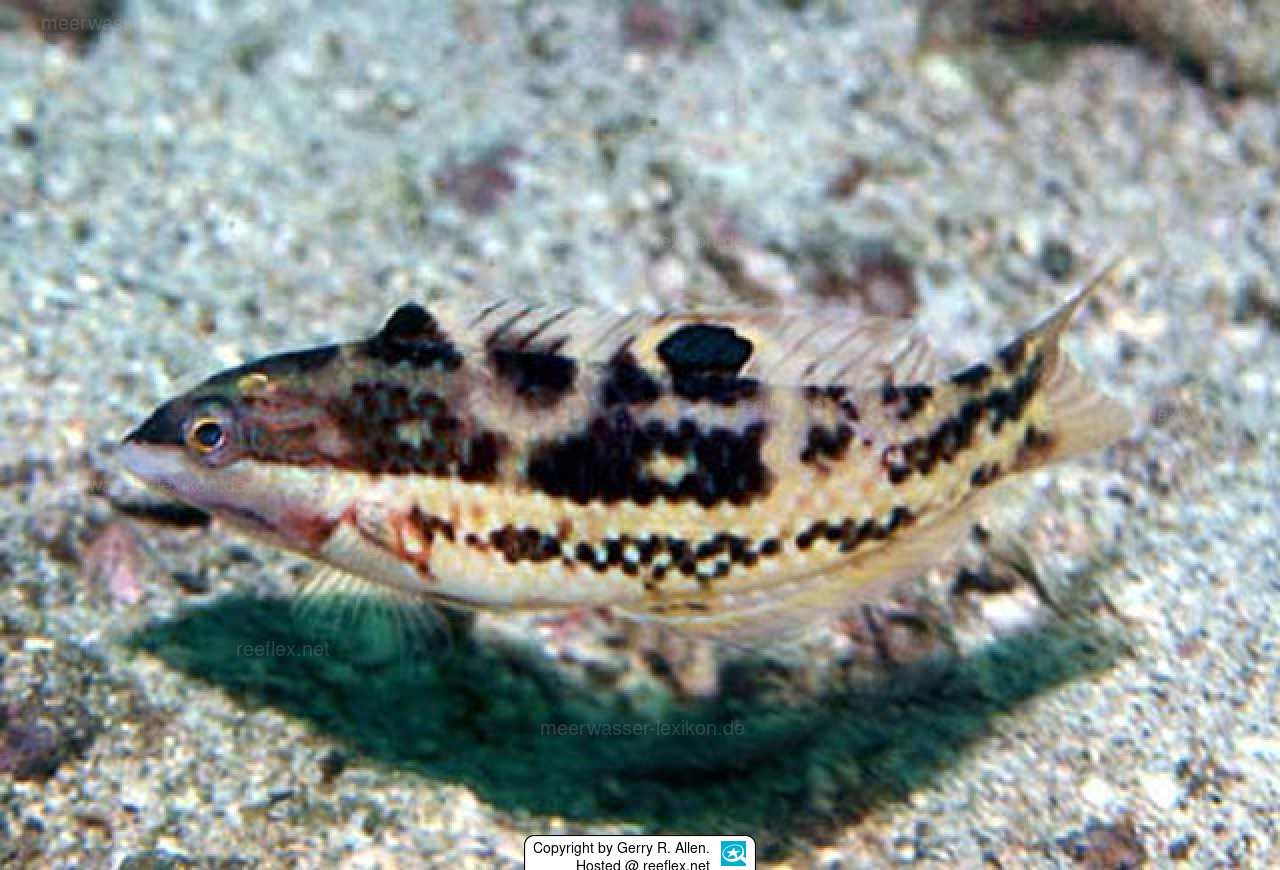Info
(Jordan & Gilbert, 1882)
Spinster wrasse is endemic to the Eastern Pacific, and is found from the Gulf of California to northern Peru, including Revillagigedo, Cocos, Galapagos and Malpelo Islands.
This wrasse is found over sand and gravel bottoms near coral reefs.
Adults are solitary but juveniles form aggregations, sometimes with other species of wrasses.
At Gulf of Chiriqui, Panamá, this fish could be found in all types of substrata.
It hides under the sand to sleep and to seek shelter, in cases of danger, and feeds on mollusks, brittle stars, sea urchins and crabs.
Synonym:
Platyglossus nicholsi Jordan & Gilbert, 1882
Classification: Biota > Animalia (Kingdom) > Chordata (Phylum) > Vertebrata (Subphylum) > Gnathostomata (Superclass) > Pisces (Superclass) > Actinopteri (Class) > Perciformes (Order) > Labroidei (Suborder) > Labridae (Family) > Halichoeres (Genus) > Halichoeres nicholsi (Species)
Jumping guard
A jumping guard prevents (nocturnal) fish from jumping out.
Wrasses, blennies, hawkfishs and gobies jump out of an unprotected tank in fright if their night rest is disturbed, unfortunately these jumpers are found dried up in the morning on carpets, glass edges or later behind the tank.
https://www.korallenriff.de/en/article/1925_5_Jump_Protection_Solutions_for_Fish_in_the_Aquarium__5_Net_Covers.html
A small night light also helps, as it provides the fish with a means of orientation in the dark!
Spinster wrasse is endemic to the Eastern Pacific, and is found from the Gulf of California to northern Peru, including Revillagigedo, Cocos, Galapagos and Malpelo Islands.
This wrasse is found over sand and gravel bottoms near coral reefs.
Adults are solitary but juveniles form aggregations, sometimes with other species of wrasses.
At Gulf of Chiriqui, Panamá, this fish could be found in all types of substrata.
It hides under the sand to sleep and to seek shelter, in cases of danger, and feeds on mollusks, brittle stars, sea urchins and crabs.
Synonym:
Platyglossus nicholsi Jordan & Gilbert, 1882
Classification: Biota > Animalia (Kingdom) > Chordata (Phylum) > Vertebrata (Subphylum) > Gnathostomata (Superclass) > Pisces (Superclass) > Actinopteri (Class) > Perciformes (Order) > Labroidei (Suborder) > Labridae (Family) > Halichoeres (Genus) > Halichoeres nicholsi (Species)
Jumping guard
A jumping guard prevents (nocturnal) fish from jumping out.
Wrasses, blennies, hawkfishs and gobies jump out of an unprotected tank in fright if their night rest is disturbed, unfortunately these jumpers are found dried up in the morning on carpets, glass edges or later behind the tank.
https://www.korallenriff.de/en/article/1925_5_Jump_Protection_Solutions_for_Fish_in_the_Aquarium__5_Net_Covers.html
A small night light also helps, as it provides the fish with a means of orientation in the dark!







 Dr. Gerald (Gerry) Robert Allen, Australien
Dr. Gerald (Gerry) Robert Allen, Australien




















































































